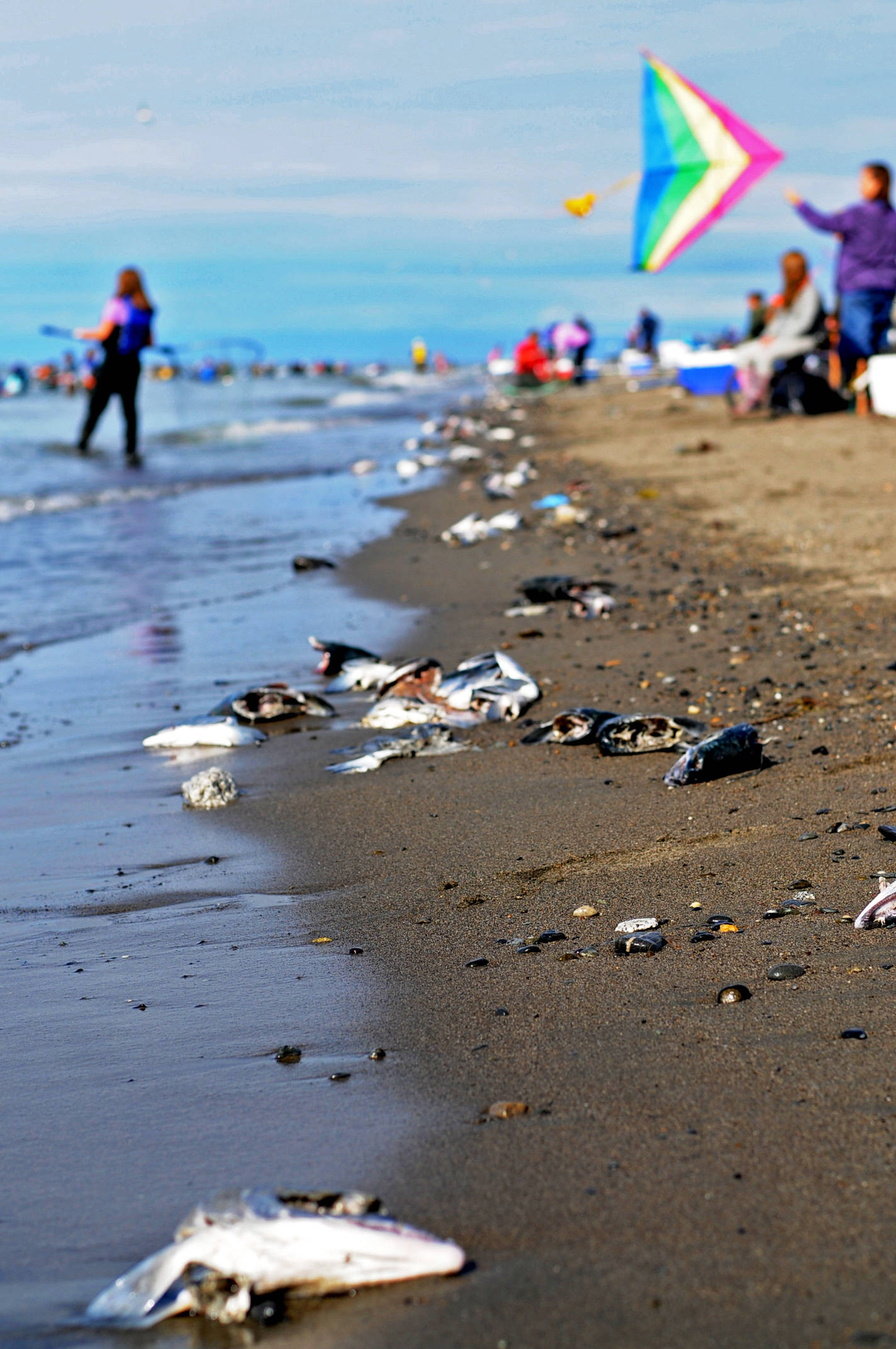The final weekend of the Kenai River personal-use dipnet fishery kicks off Friday.
With sockeye salmon passage increasing into the Kenai River — nearly 72,000 sockeye passed the Alaska Department of Fish and Game’s inriver sonar on Wednesday — there may be more fish being caught and taken home. Some residents of the Kenai and Soldotna areas have noticed piles of fish waste dumped on the sides of roads in rural areas, which can attract bears or other wildlife.
The Kenai Police Department responded to a call Wednesday about a pile of illegally dumped fish carcasses in the Richfield Drive area of Kenai, off Dogwood Street. The police officers cleaned up the mess and disposed of it properly, said Kenai Police Chief Dave Ross.
They had another call the day before that of fish waste dumped improperly in a dumpster in town, but other than that, there haven’t been a large number of complaints about piles of fish waste, he said.
“I would definitely encourage people to dispose of it properly,” Ross said.
When people leave piles of fish waste lying in the open, it can be a bear attractant and a public safety hazard for nearby residents and visitors. It’s illegal under state law and violators can actually be fined between $300 and $1,000, according to a June 30 news release from the Alaska Department of Fish and Game.
Soldotna area wildlife management biologist Jeff Selinger said Fish and Game hasn’t gotten calls about illegally dumped fish waste this year but reminded anglers that fish carcasses should be taken to appropriate containers. The Kenai Peninsula Borough takes fish waste at its transfer sites across the peninsula and at the Central Peninsula Landfill near Soldotna for free, Selinger said.
“The dump has a dumpster where they specifically take fish carcasses,” he said.
At the transfer sites, fish waste has to be in smaller quantities and double-bagged in plastic.
Ross said if dipnetters can’t get waste into the dumpsters to at least get it into the water. The city of Kenai rakes the beaches each night after the dipnet fishery closes at 11 p.m. to clean some of the waste. On the rivers, the proper method is to cut up the remaining carcass after filleting into palm-size chunks and throw them far out into the fast-moving water to prevent buildup of fish waste washed back up against the banks, possibly attracting bears to highly trafficked areas.
Reach Elizabeth Earl at elizabeth.earl@peninsulaclarion.com.

